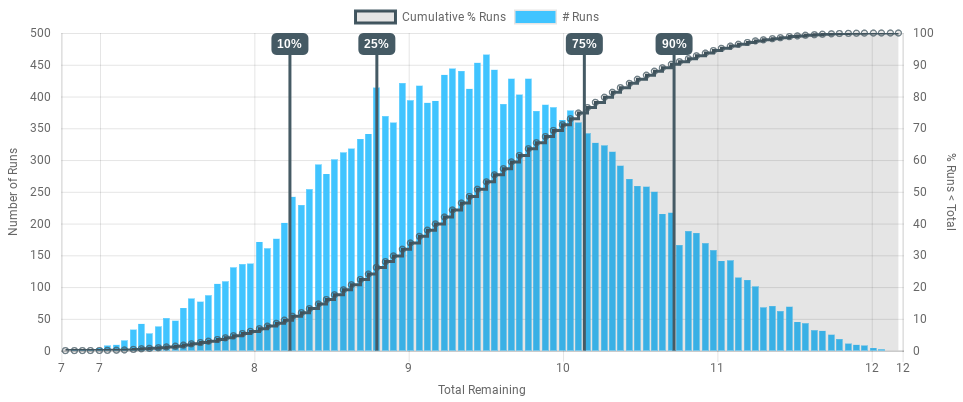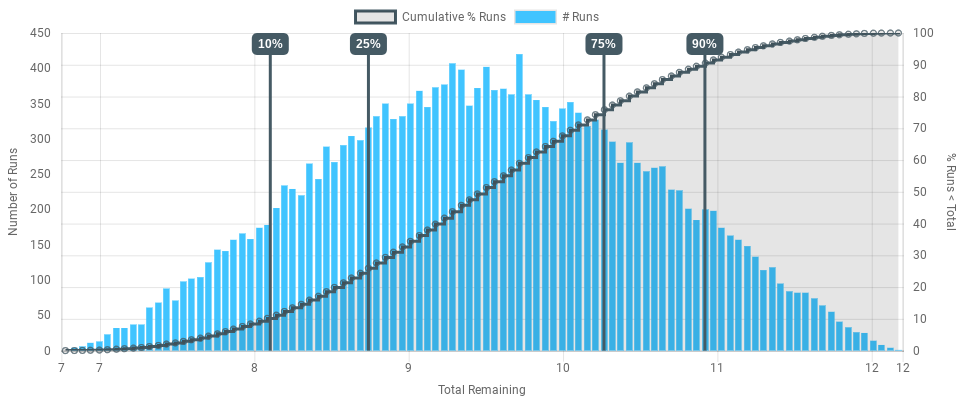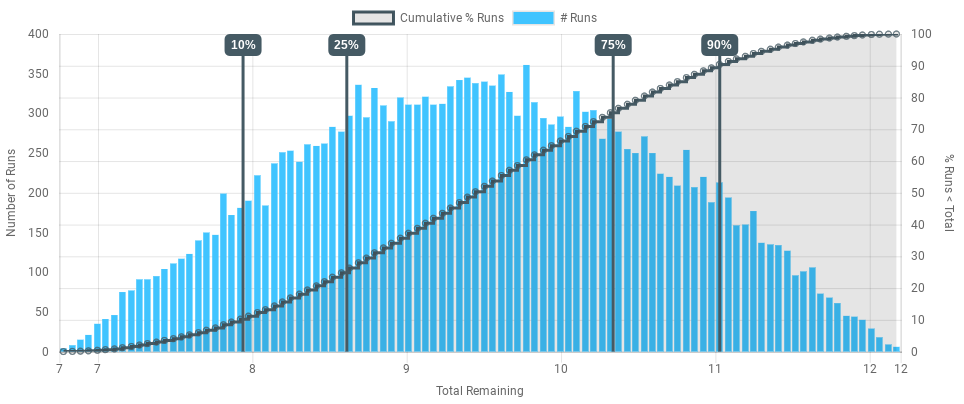Today we're proud to introduce a new Pro feature to DartCannon - Correlated Outcomes. Existing subscribers can access it today - join our pro uses by subscribing today to power up your subscriptions.
Full documentation is available, but we wanted to give a quick introduction.
Why Use Correlated Outcomes
In a typical simulation, if one task or line item is on the low side of the estimate it doesn't have any impact on other outcomes. If estimates represent pure uncertainty, you don't want individual results to be related.
Sometimes however, all outcomes will trend towards the high end or low end together, possibly due to systematic estimation failures or a feature of the underlying process. In those cases, you'll want to enable correlated outcomes.
The Effect of Correlation
Correlated outcomes aren't all or nothing - you can tune the level of correlation. Here are a few outcomes for the same simulation - a simple budget with three line items -

No Correlation

50% Correlation

75% Correlation

100% Correlation

Conclusion
Correlated outcomes is an advanced feature with a lot of complexity. We'll be sharing additional tips and tricks in the coming weeks to help you get the most out of this powerful option.
At DartCannon we're committed to continuous improvement and continuing to give our pro users more features. Sign up today to get access to correlated outcomes and all the Pro features.
Photo by Sam Mgrdichian on Unsplash